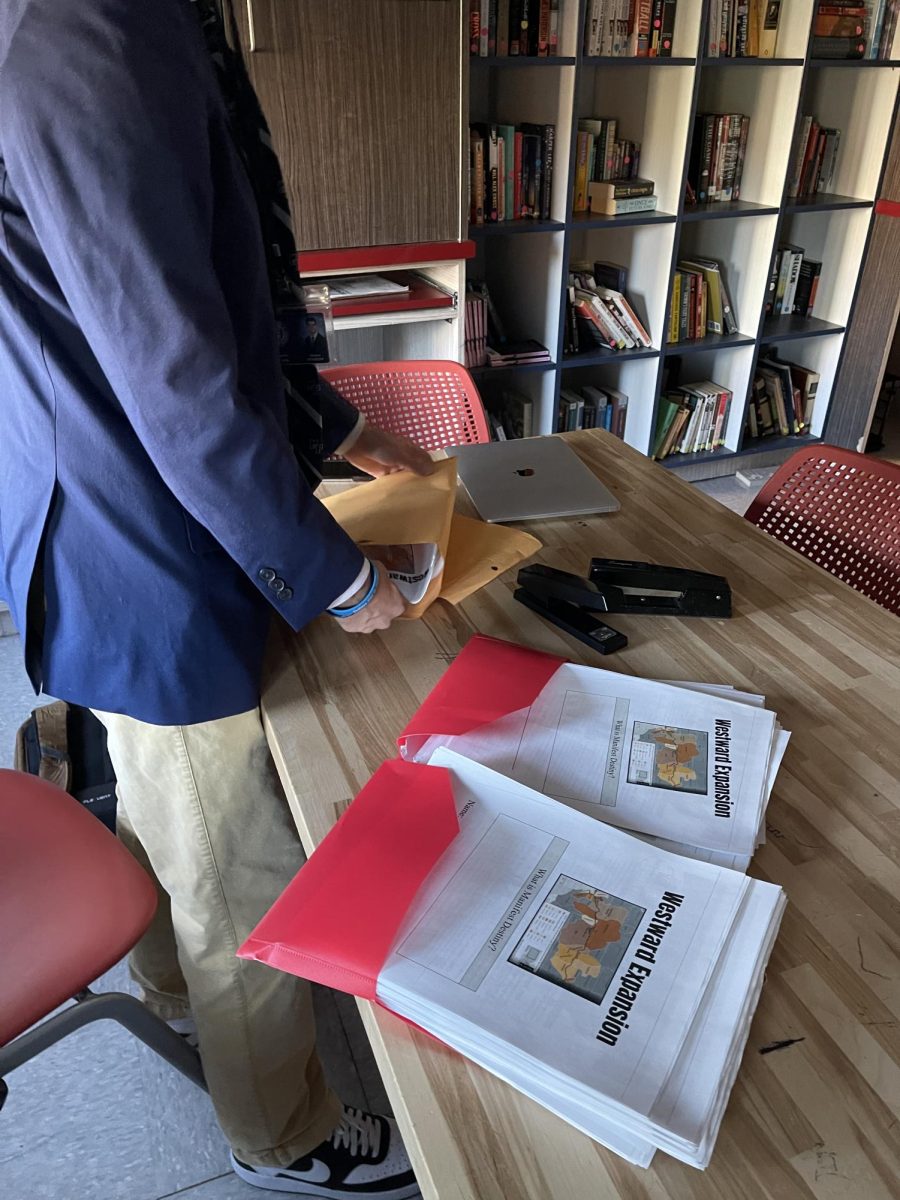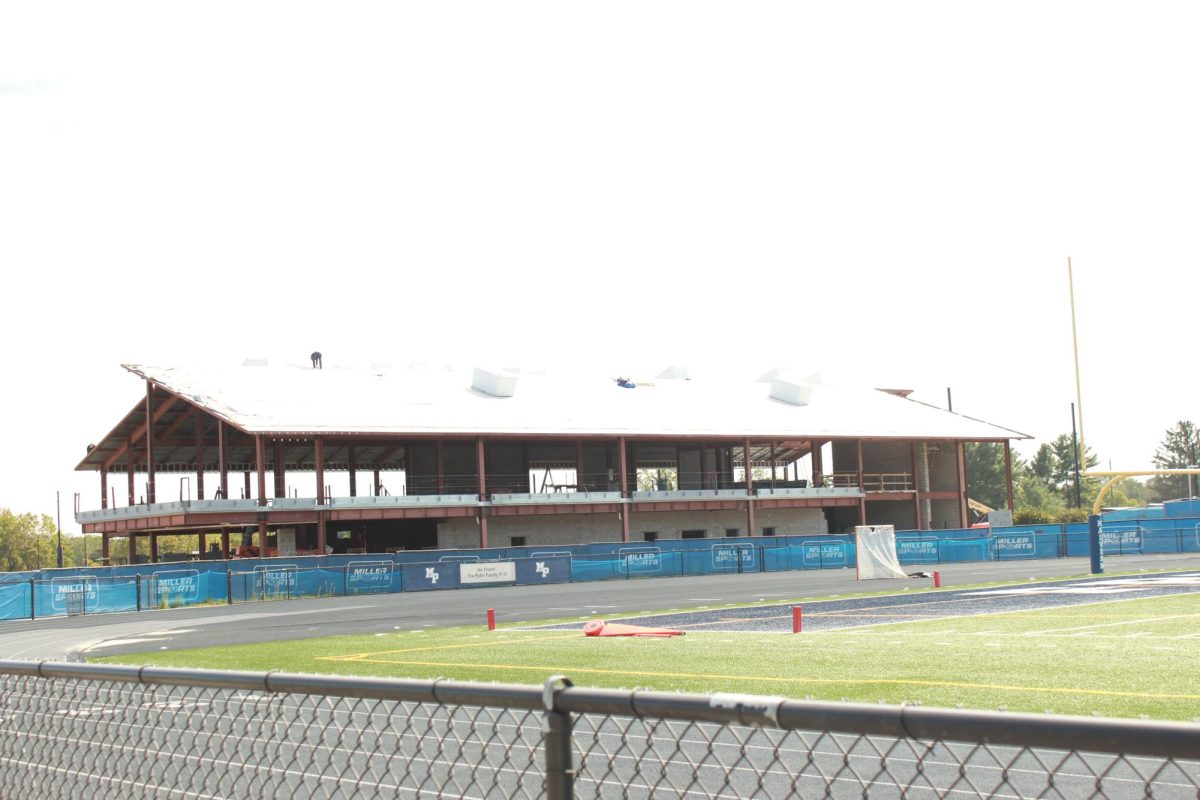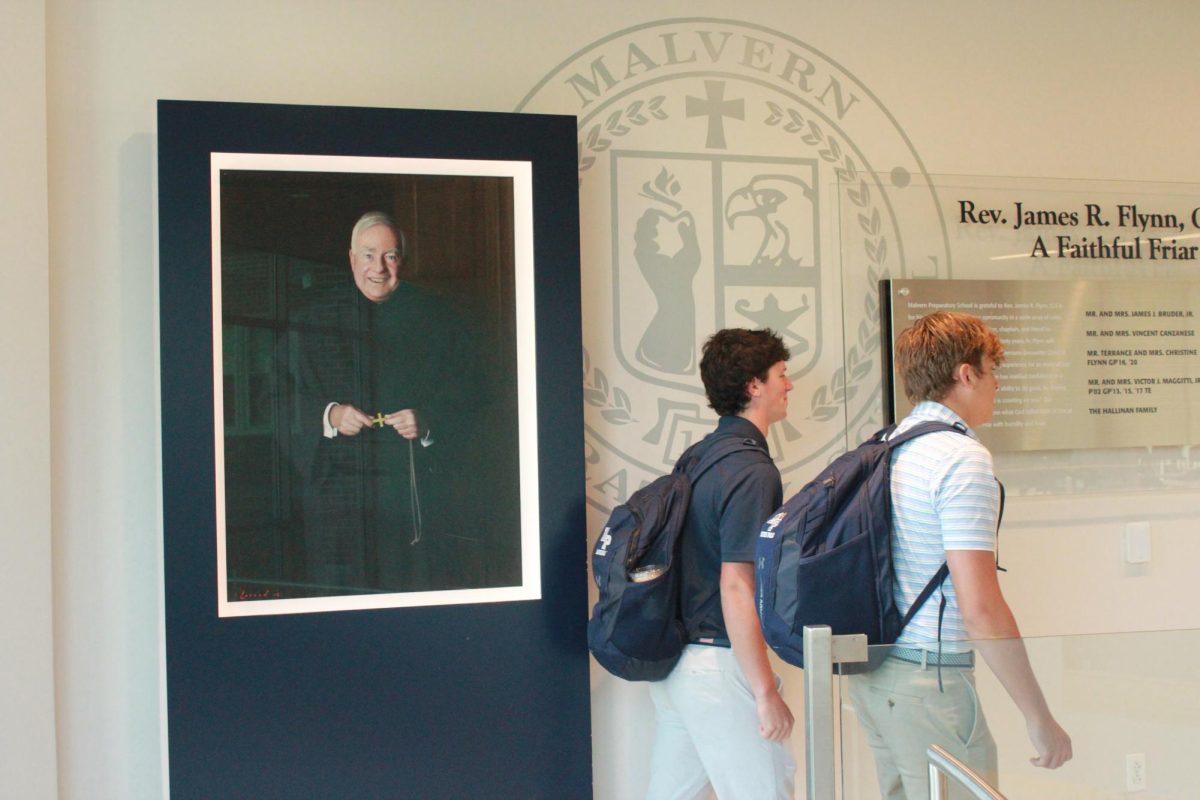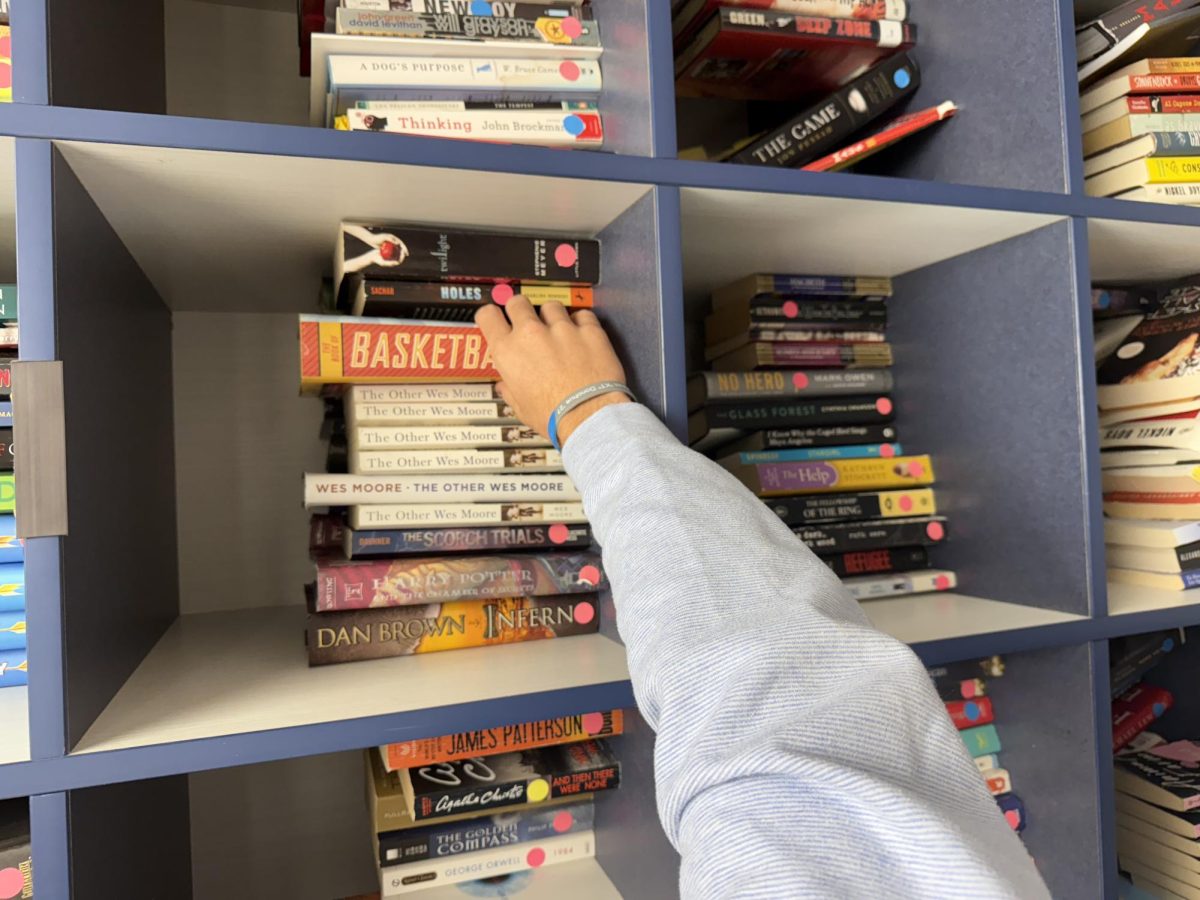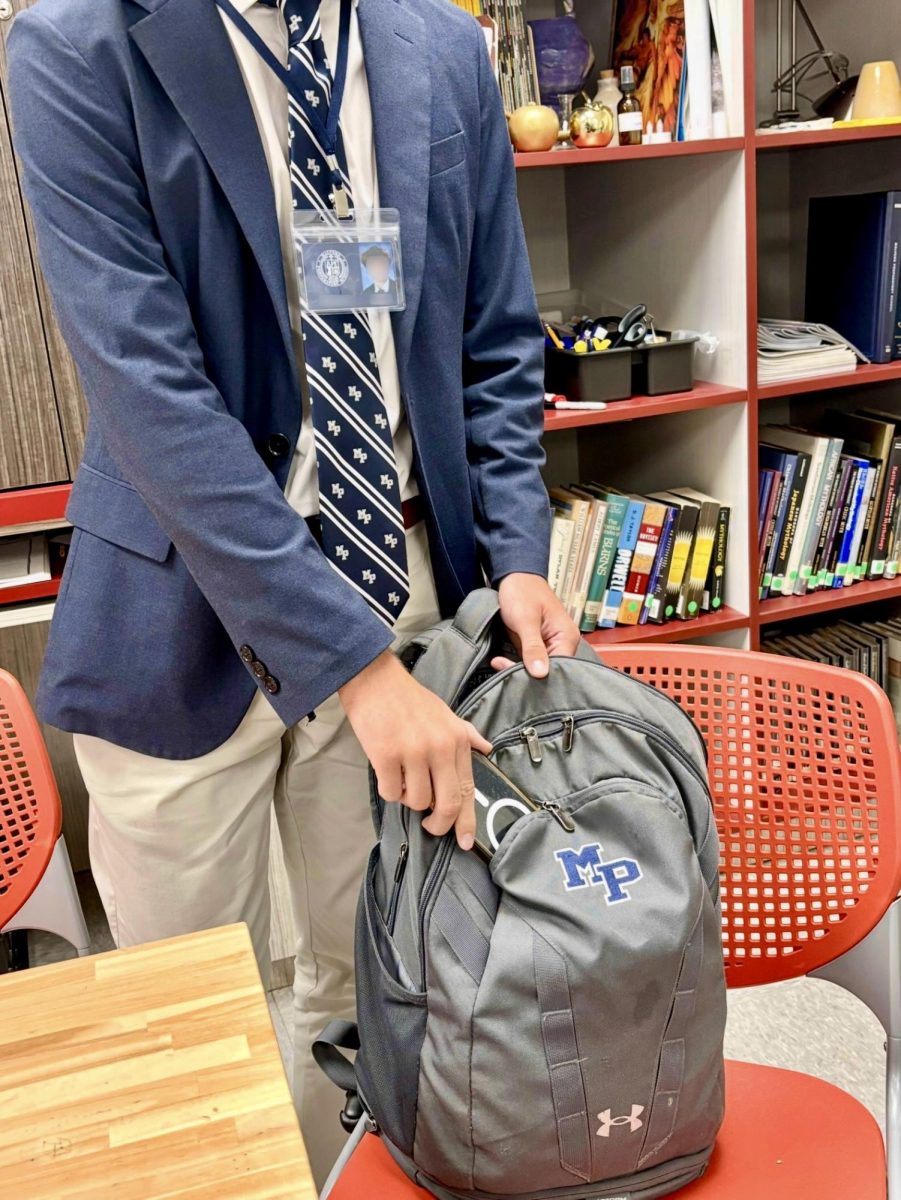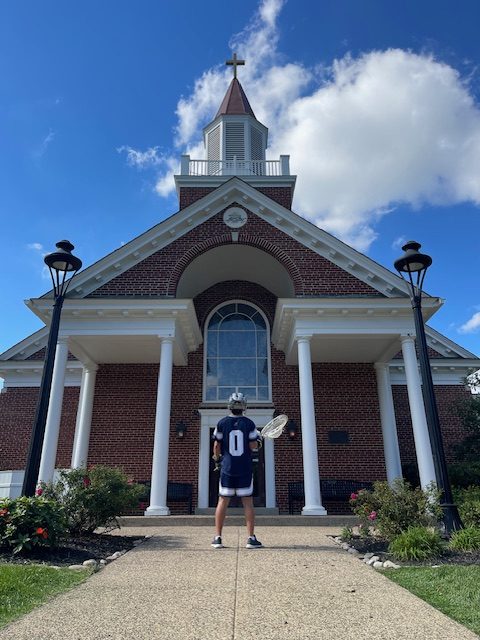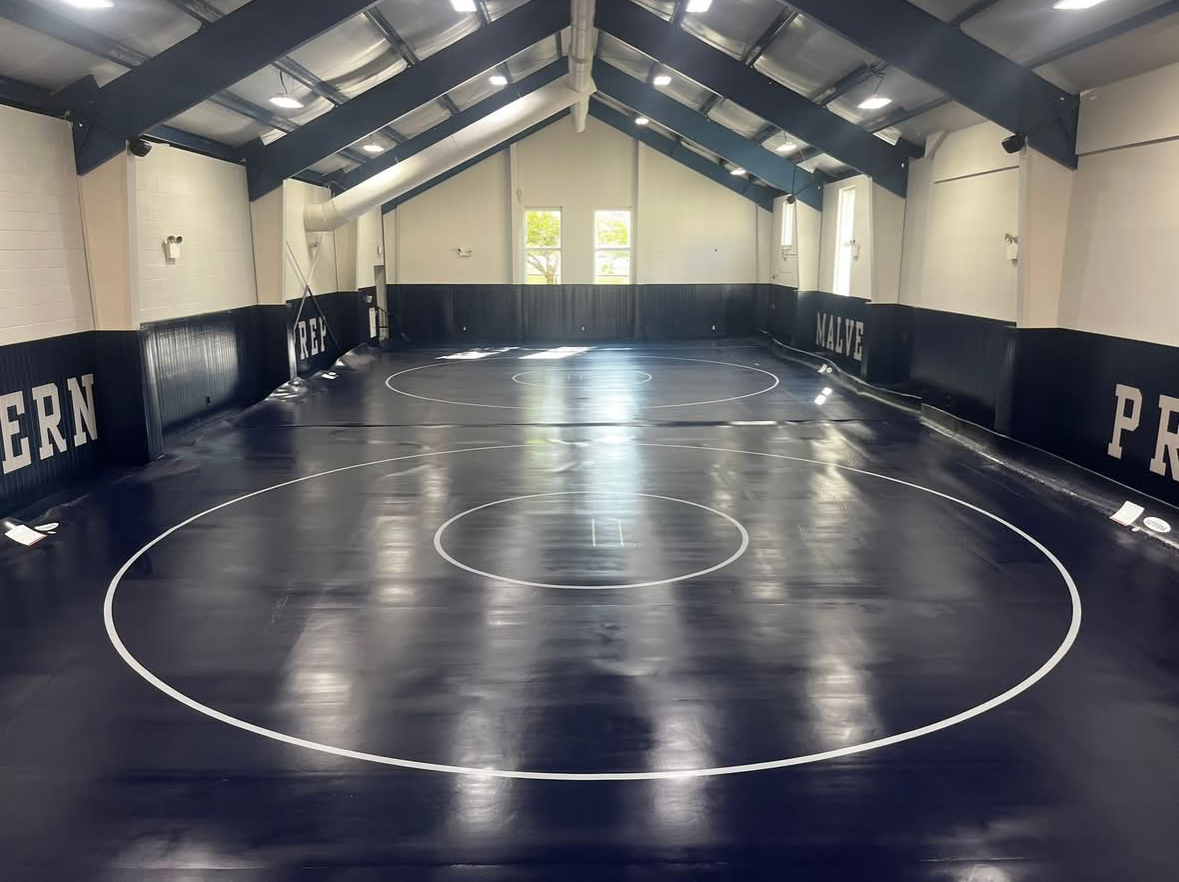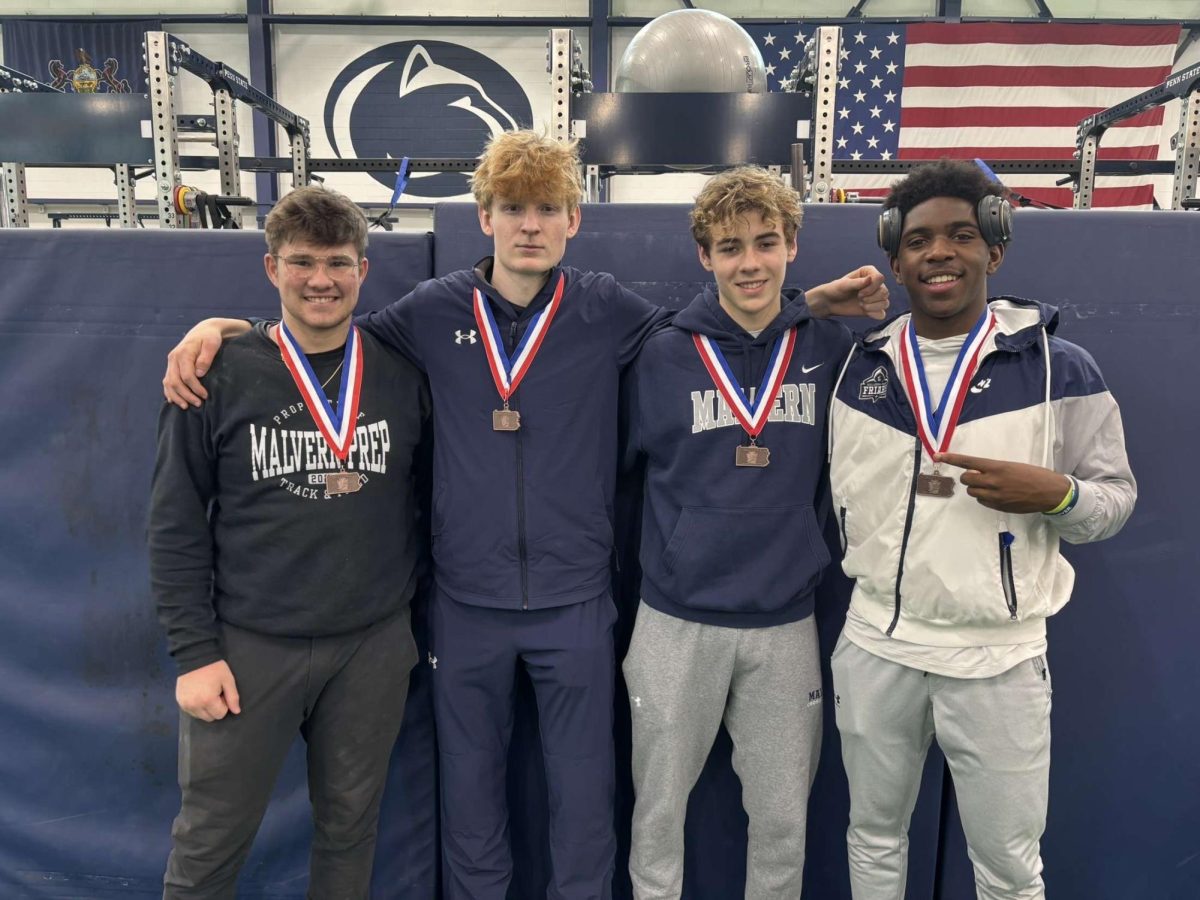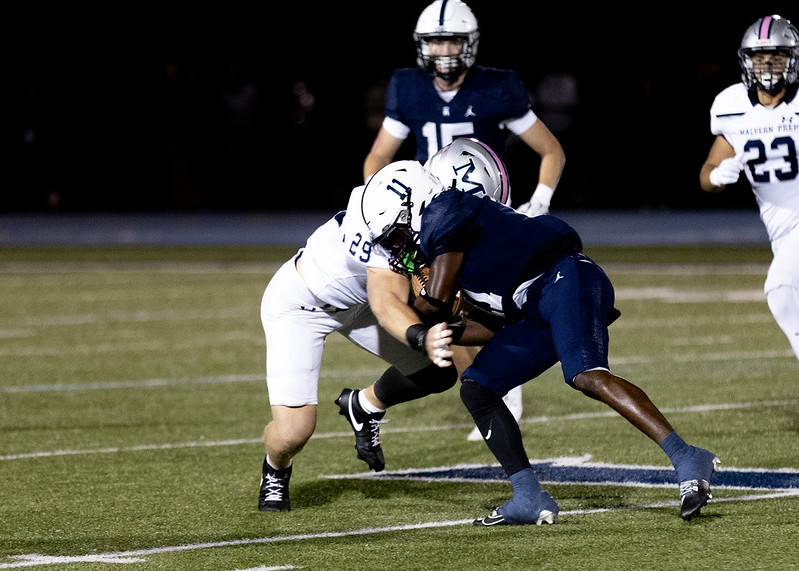Athletic Trainer shares updates on status of Sports Medicine and Research Institute – and a career goal that could change the outlook of sports in America.
Athletic Trainer Mr. William Mills has goals that would rocket Malvern Sports Medicine to the forefront of sports medicine research – not just at the high school level, but the national level.
In a previous story by the Blackfriar Chronicle in May 2015, Mills shared those goals, which included creating a Sports Medicine and Research Institute, conducting doctorate research on G-forces, and developing a concussion baseline testing center.
Since that story, Mills has made big strides and has expanded his vision for Malvern Sports Medicine.
The Sports Medicine and Research Institute is at the center of his plans. Mills said that it will be a research institute for students who want to get involved with sports medicine.
“We will actually do real research that actually gets published, and we have students who are involved with that,” Mills said.
Mills saw the necessity for college students studying science to do research, so he thought that he could bring that experience to the high school level. He said that research experiences can help in the college process.
“You can put on your resume that you are involved with this research, and that really separates you,” Mills said. “It also shows that you have some initiative as well.”
Before he could begin constructing this institute, he had to gain an educational background in research and statistics. That is how he became involved in his doctoral program in Athletic Training at Rocky Mountain University of Health Professions, where he takes online classes.
For his research, Mills is studying G-forces – that is, a force done on an object by gravity or acceleration – and how those G-forces affect the head during a specific sport.
The G-forces will be measured in rugby, lacrosse, and wrestling. Mills has G-force trackers that will be placed on the heads of the athletes. They will measure head acceleration, both linear and rotational. If the head acceleration force reaches a certain range, the player will be taken off the field and tested for balance.
Mills said that doing these G-force measurements are rare nationwide for sports like lacrosse and rugby, which will be done in the spring.
“We are doing immediate measurements,” Mills said. “We are pulling the guy out right away, and no one else has done that in the country.”
Another uncommon aspect of Mills’s research is that he is studying “subconcussive” (below diagnosis for a concussion) injuries and how they affect the athlete in the long term. He is also attempting to coin a phrase of his own to describe the ailment: “sub-awareness concussive injury.”
Joining Mills on his research are seniors Christian Ostrowski, Sam Rose, and Garrett Myers. Ostrowski’s interest in sports medicine took root after a concussion he suffered playing hockey had him involved with Mills doing rehab.
“I got to start off with Millsy and that was a moving experience,” Ostrowski said. “Later on my junior year, he came over during a hockey game and said, ‘I’m starting a program for students to be involved in my research, would you want to help with that?’, and I said, ‘Sure.’”
The role of the three students on Mills’s dissertation team is to record most of the data.
“We do baseline testing, and we also go to practices, record practices, and get all the necessary data for his research,” Ostrowski said.
Although they have not started yet, Ostrowski said that the goal of the research is to spread awareness about how concussions don’t just come from the big hits.
“There are different ways to get a concussion,” Ostrowski said. “We don’t think a small hit could be a bad thing, but it really could be and we just want to get the word out that it doesn’t have to be a big hit to get you a concussion. It can be a small hit in a different way.”
Mills expects to be done his doctorate by the fall of 2017. Along with earning his doctorate degree, he is also receiving an education certificate as well.
“That is perfect because the overall picture of the Malvern Prep Sports Medicine Research Institute includes education,” Mills said.
Mills plans to revive the Sports Medicine Course he taught at Malvern for 12 years, which stopped five years ago because he was too busy. Depending on when he gets his doctorate degree done, he plans to implement this course beginning in fall 2018 or 2019.
Mills also hopes to create more courses. He wants to teach a Neuroscience class and a Research Methods class. He also hopes his assistant Ryan O’Kane, who began working at Malvern in August, will teach another Sports Medicine Course.
O’Kane is working on his doctorate degree in Athletic Training at the University of Idaho. Mills said that Malvern would be one of the only – if not the only – high school in America that has two doctorate-level athletic trainers.
“Getting my doctorate degree would be the next big step in my career,” O’Kane said.
O’Kane said that his research is focused on patellar tendonitis. He is specifically focusing on manual treatment techniques – quick, efficient, and hands-on treatments – to the injury and will bring these techniques back to Malvern.
“It’s all about the athletes for me,” O’Kane said.
With O’Kane’s help and research, Mills plans to expand his own studies beyond concussions as the Sports Medicine Institute evolves.
“Concussions are kind of my main area, but we are probably going to be studying musculoskeletal injury, which actually does involve concussion, so it gets a little deeper,” Mills said. “We’ll study functional movement and heart stuff too.”
Mills has another long-term project on the side that is just in the beginning stages.
“We are going to do a possibly 35-year study on concussions in the country,” Mills said. “I am involved with a doctor, [Col.] Dallas Hack, and some of his people in his committee.”
Hack, the former head of U.S. Army Brain Research according to the New York Times, is working to raise money now for the study.
Mills said that the study would follow a person who got a concussion in high school or college to 35 years of their adult life and see what effects it has on the individual. He wants the study to hopefully dispel the hysteria circulating around sports like football that have a greater risk of concussions.
“What if there is a greater risk of kids getting diabetes, or some kind of chronic disease because they aren’t doing activities because they are afraid of concussions?” Mills said. “So we want to do this 35-year study to see really what is this outcome.”
Mills wants private schools around the country to be involved because of their strong alumni networks who some of which would participate in the study. He hopes to reach out to Inter-Ac schools first to gauge their interest.
At this point in his career, Mills thought it was only right to give back to his profession through research and to Malvern with education. He said that Head of School Mr. Christian Talbot formed a committee to develop these plans last year. He knows the initiatives he is starting will take time, but he thinks it will be well worth the wait.
“The sooner the better,” Mills said. “I’m tastefully aggressive.”
CORRECTIONS: January 20, 2017
The December print edition referred to the proposed research institute as the “Sports Medicine Institute.” It should be the “Sports Medicine and Research Institute.”
The December print edition said that Mills is working on his doctorate degree in Physiology, but his degree will be in Athletic Training.
The December print edition referred to the the university Mills is working for his doctorate at as “Rocky Mountain University.” The university is called, “Rocky Mountain University of Health Professions.”
The December edition said that O’Kane is focusing his doctorate research on immunotherapy techniques. His focus is on manual therapy techniques.



